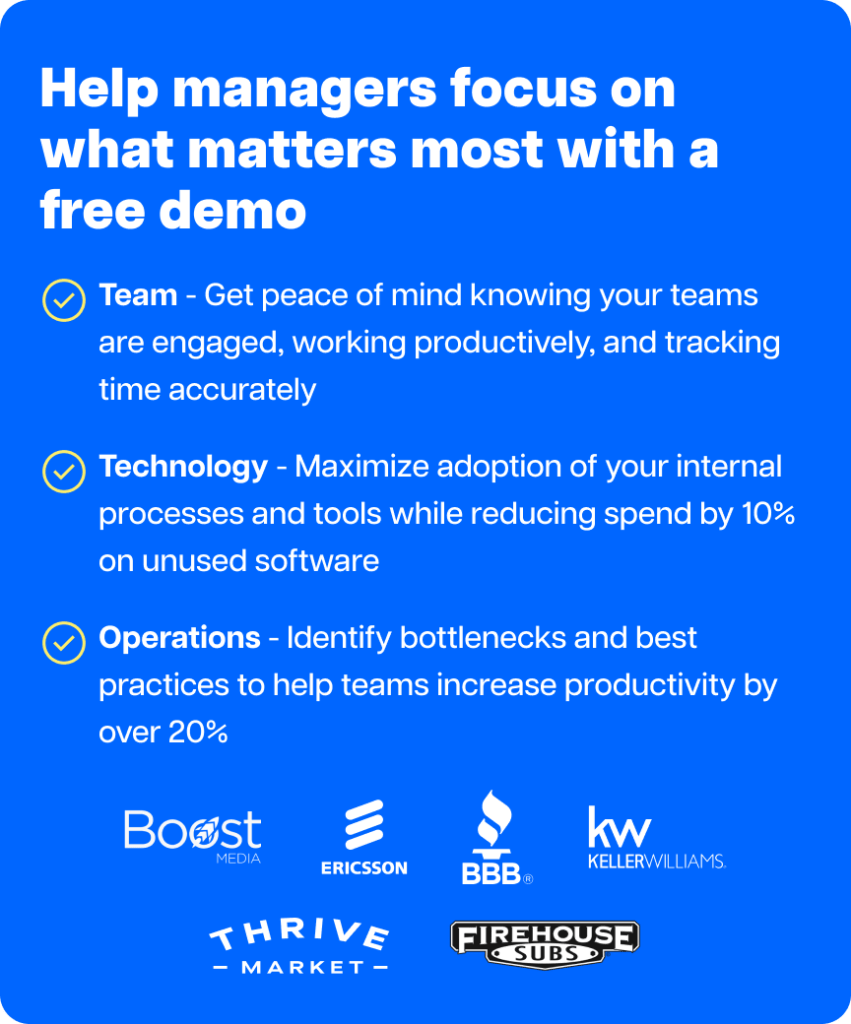Workforce analytics is the process of gathering employee time and activity data and reviewing it to find ways of increasing productivity and improving engagement.
That means it’s crucial for analyzing performance, spotting trends, and making data-driven improvements. It’s also essential for effective human capital management (HCM).
In this article, we’ll cover everything you need to know about workforce analytics, from the types you should collect to the benefits you can anticipate and tips for implementing them successfully across your business.
Types of workforce analytics
Workforce analytics combines several kinds of data that originate from human resources (HR) practices. With these analytics, operations and HR professionals alike can assess and address patterns in the workplace.
Descriptive analytics
Descriptive analytics provides an overview of your team and what they’ve accomplished. This type of analytics generally focuses on what’s already happened, from new hires to employee turnover.
For example, you could use descriptive analytics to determine the average hours your employees worked in a typical week over the past year. This type of HR analytics can also tell you how many employees you’ve hired or lost over the year.
Reviewing descriptive analytics is fairly straightforward. The data doesn’t tell you why certain outcomes happened or what to do about them. For that, you need other types of analytics.
Diagnostic analytics
Diagnostic analytics identifies possible reasons for employee performance or causes for business outcomes. This kind of data goes hand-in-hand with descriptive analytics.
With diagnostic analytics, you can connect two different outcomes. For example, you can spot links between a new manager joining a team and a spike in resignations occurring shortly after.
Predictive analytics
Predictive analytics looks at the past and uses historical data and machine learning to model future outcomes. With these insights, you can see what happens if trends continue and forecast the potential impact.
For example, you can use predictive analysis to review the past year’s turnover data and estimate how many call center agents may leave in the coming year. Based on this past data, the model can also identify which employees are most likely to leave.
Predictive analytics is valuable because it helps you understand what’s likely to happen next based on past events. However, these insights won’t tell you how to act on the information.
Prescriptive analytics
Prescriptive analytics is the most forward-looking. This type of intel provides data-driven suggestions for the steps to take next based on the outcomes you want.
For example, you can use prescriptive analytics to identify training needs to get your team to a certain level. With these insights, you can design training programs, manage workforce planning, and allocate budget.
How workforce analytics can help your company
Workplace analytics offers a long list of benefits. Here’s how you can use HR analytics to your advantage.
Discover inefficiencies
Need to do more with less? You can analyze your overall business performance and identify issues like bottlenecks that slow down workflows or tasks and take your team more time than they should.
By making decisions with data, you can pinpoint the issues that would be most helpful to resolve. Then, you can introduce new tools or processes to make your team more productive.
Monitor employee engagement
Is your team working hard or hardly working? With workforce analytics, you can monitor employee engagement and see who puts in too many hours or spends too much time idle.
Once you’ve identified the signs of low engagement or impending burnout, you can make a plan to address them. For example, you can adjust schedules to encourage better work-life balance and improve the employee experience.
Optimize employee scheduling
Do your employees have enough support during their shifts, or are they responsible for too much at once? Analyzing employee data can help you optimize schedules to ensure coverage.
Increasing coverage may cost more upfront. However, in the long run, it can reduce burnout and improve employee satisfaction, ultimately increasing employee retention rates.
Reduce absenteeism and turnover
Is your business losing too much money on hiring and training new employees, only to lose them a short time later? Do your employees report for shifts irregularly?
Using workforce analytics, you can identify absentee and turnover patterns. For example, are your employees receiving insufficient training or days off? Using this data, you can create a retention plan.
Find top talent
Which employees contribute the most and why? With people analytics, you can identify who’s achieving the best results with metrics like revenue, deliverables, and productivity.
Then, you can analyze their processes, workflows, and approaches. If you can find out why they perform so well, you can use what you learn to train other employees.
Address skill and knowledge gaps
Do you want your employees to work more efficiently or advance to the next level? Workforce analytics can identify and address skill and knowledge gaps.
Once you know where your team could benefit most, you can provide the mix of training and professional development that best meets their needs.
What to consider before implementing workforce analytics
Before choosing and introducing a workforce analytics tool, consider the following issues.
Data quality and accuracy
To make data-driven decisions, you need accurate, high-quality workforce analytics. The easiest way to get that data is to use a reliable tool or tech stack to track and collect it.
You likely want to gather data across the organization for maximum impact. If you automatically collect data on all employees, you can gain an overall understanding of the company, each department, and all individual contributors.
Lack of dedicated personnel
Analyzing workforce data can be a full-time role. Before collecting data, make sure you have enough capacity to analyze and act on the information.
In some cases, HR teams may benefit from dedicated data analysts. Yet the right workforce analytics software can handle much of the process automatically, which can help keep costs under control.
Resistance to change
Any major change in the workplace is likely to be met with resistance. To overcome it, start by explaining why it’s necessary to implement workforce analytics and how the entire company can benefit. Aim for transparency.
Listen to your team’s concerns. For example, they may be worried about data privacy or personal privacy. Respond to these issues or lay out a realistic plan for addressing them before beginning the rollout.
3 key factors for successfully implementing workforce analytics
Keeping these 3 factors in mind gives your workforce analytics program the best chance of success.
1. Technology integrations
Workforce analytics tools are more powerful when they work with your tech stack. Before investing in a solution, be sure the platform you’re considering integrates with the tools you already use.
For example, Time Doctor integrates with HR and payroll tools like Gusto and ADP. It also works with project management tools like ClickUp, Asana, and Trello.
2. Stakeholder support
HR and operations teams need employee buy-in to implement workforce analytics. You want to have stakeholders in each department supporting the rollout.
Ensure key managers understand both the benefits of the workforce analytics tool you choose and how to use it. To keep stakeholders invested, share your analysis with them.
3. Analysis and feedback
Data collection and review are just the beginning of workforce analytics. To get maximum value from the process, make time to review the analysis and make a plan to act on it.
For example, you may need to offer more advanced training to one team, schedule more agent coverage for another, and replace an outdated tool so another team can work more efficiently.
Get reliable workforce analytics with Time Doctor
Time Doctor provides workforce analytics dashboards and benchmarks for organizations, teams, and individual contributors. The platform automatically tracks employee time and activity, including hours worked and time spent active versus idle.
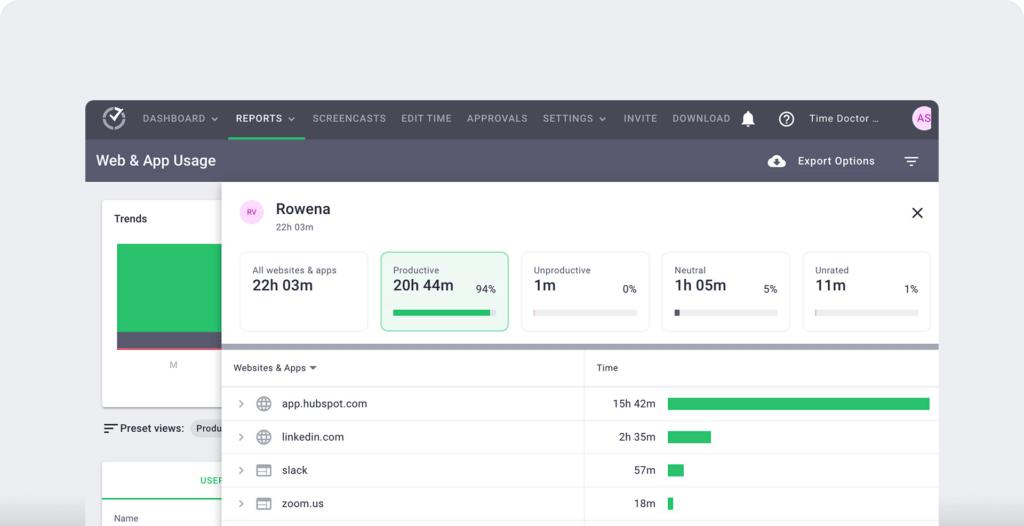
Time Doctor also records the projects and tasks your team tackles throughout the day so you can see how much time goes into each step. Plus, the platform monitors the websites and apps your employees use to do their jobs, no matter where they work.
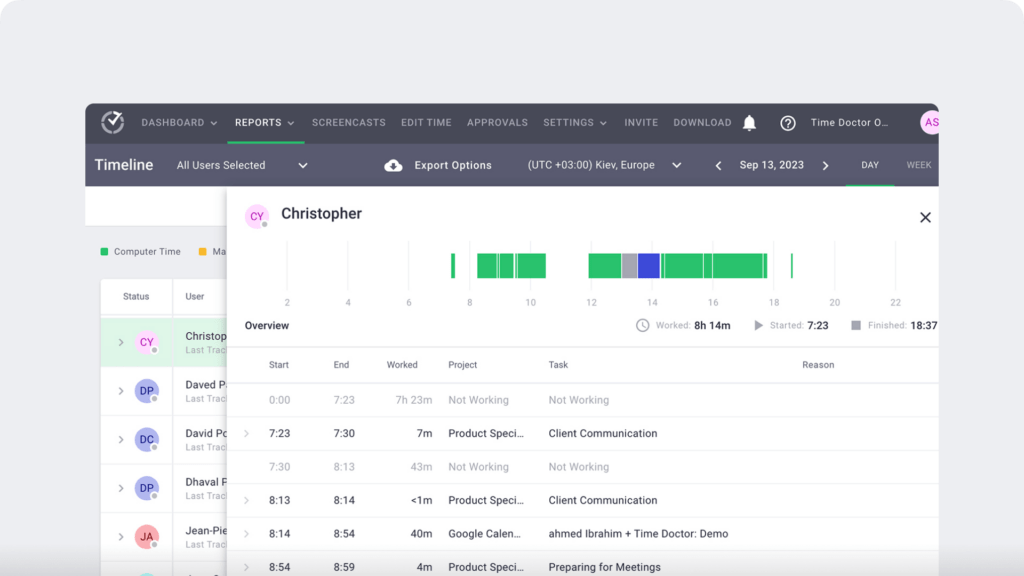
Based on your custom settings, Time Doctor labels these sites and apps as productive or unproductive. It then displays productivity analytics to help you see how well your employees allocate their time during the workday.
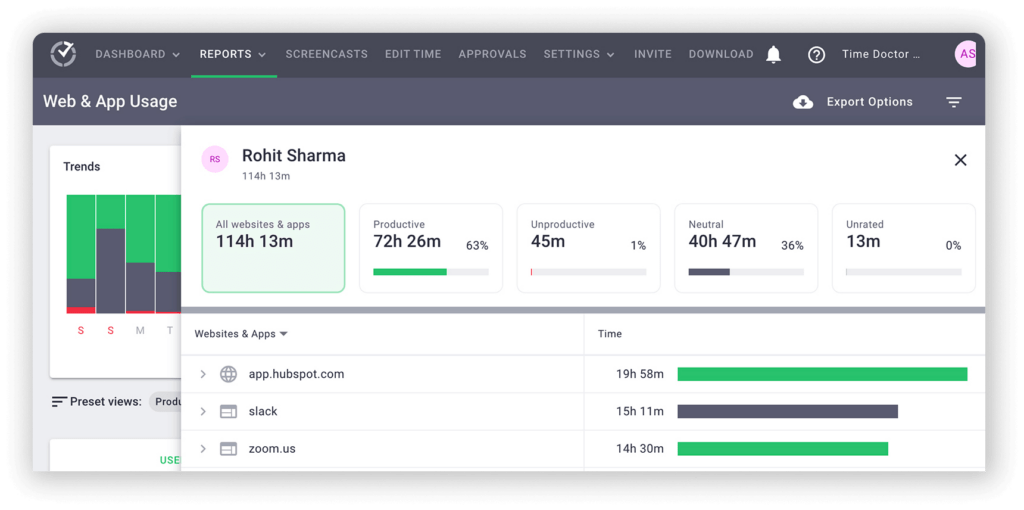
In addition, Time Doctor automatically tracks work-life balance based on your organization’s settings. With this data, you can see who’s working too much so you can intervene before they reach burnout.
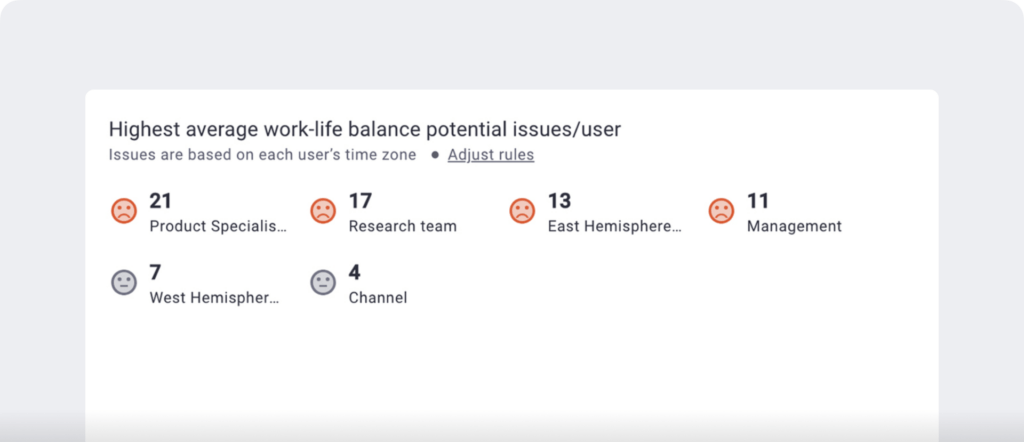
Managers don’t even need to log in to Time Doctor regularly in most cases. The platform automatically notifies stakeholders about key metrics, such as low activity levels. That way, you can address performance and engagement issues efficiently.
Next steps to get started with workforce analytics
With workforce analytics, you can ultimately understand what makes your team tick—so you can help them work better, enjoy more job satisfaction, and stay with your company longer.
To get started with workday analytics, book a Time Doctor demo. See how our employee time tracking and productivity insights platform can help your team do their best work.

Andy is a technology & marketing leader who has delivered award-winning and world-first experiences.

